How to cope with ADHD as a Product Manager
Jul 01, 2022
Feature image by picjumbo.com
Written by Gabe Kwakyi, Skiplevel's Head of Growth.
Want to become more technical in just 4 weeks? Find out how the Skiplevel program can help.
Did you know that over 4% of adults in the US have ADHD? This number is likely under-represented given how many are undiagnosed. Chances are you know someone who experiences symptoms that sit somewhere on the ADHD spectrum so even if you don’t have ADHD yourself, I strongly encourage you to keep reading.
Since ADHD is invisible to the eye and not often discussed in society or work, it can be hard for us to recognize how ADHD brains work differently. It’s important for us to learn about and discuss topics like this, so that we can consider how we can better support the people we work alongside every day.
Take the time today to understand how people with ADHD work, and someone may take the time tomorrow to understand how in some way you work differently.
Before we proceed with the article, please take note: this post does not provide any medical advice and is not a substitute for professional medical advice, diagnosis or treatment.
However, the article does include tips and stories from the PM ADHD community, including comments from Irene’s Twitter thread on ADHD!

What’s it like to struggle with ADHD?
People struggling with ADHD often have thoughts that are moving too fast to keep up with. Context-switching happens so constantly that it’s extremely difficult to focus on one subject for too long, like during meetings.
Routine can be difficult for the ADHD mind, particularly because digital distractions are constant. This leads to an accumulation of partially completed tasks, like open emails or Slack messages throughout the day. With ADHD, it can be tough to stay organized and finish tasks that were started or require follow-up.
When considering a new task to complete, there can be a big hurdle of resistance for someone with ADHD to clear before becoming motivated enough to work on a task that doesn’t provide a big enough reward or create an intrinsic motivation. This can make it tough to prioritize certain tasks that need to get done or to manage pivoting amidst the shifting priorities throughout the day.
Take it from Shaughness Conley Spiers, a Senior Program Manager at Cisco, who talks about her challenge living with ADHD:
Have a very hard time purposefully directing our focus on things that aren’t novel or immediately rewarding. For me, this has manifested in boredom and stagnation, which evolved into resentment… It also often goes hand in hand with rejection sensitivity dysphoria. A fancy way of saying that you are always on edge about whether people like you or think you do a good job. Also makes you wonder if every “chat” from your boss is going to result in not having a job.
Life with ADHD isn’t all negative though…
While ADHD does come with a set of challenges as touched on above, there are also a set of strengths that come along with having ADHD, particularly when working as a Product Manager, such as an ability to hyper-focus on an engaging task and being able to connect the dots in ways that technical teams may struggle with.
The below ADHD strengths iceberg shows a plethora of productive traits associated with ADHD, and there were many more optimistic comments that people with ADHD mentioned via Twitter and LinkedIn from Skiplevel founder and instructor, Irene Yu’s overcoming ADHD threads.
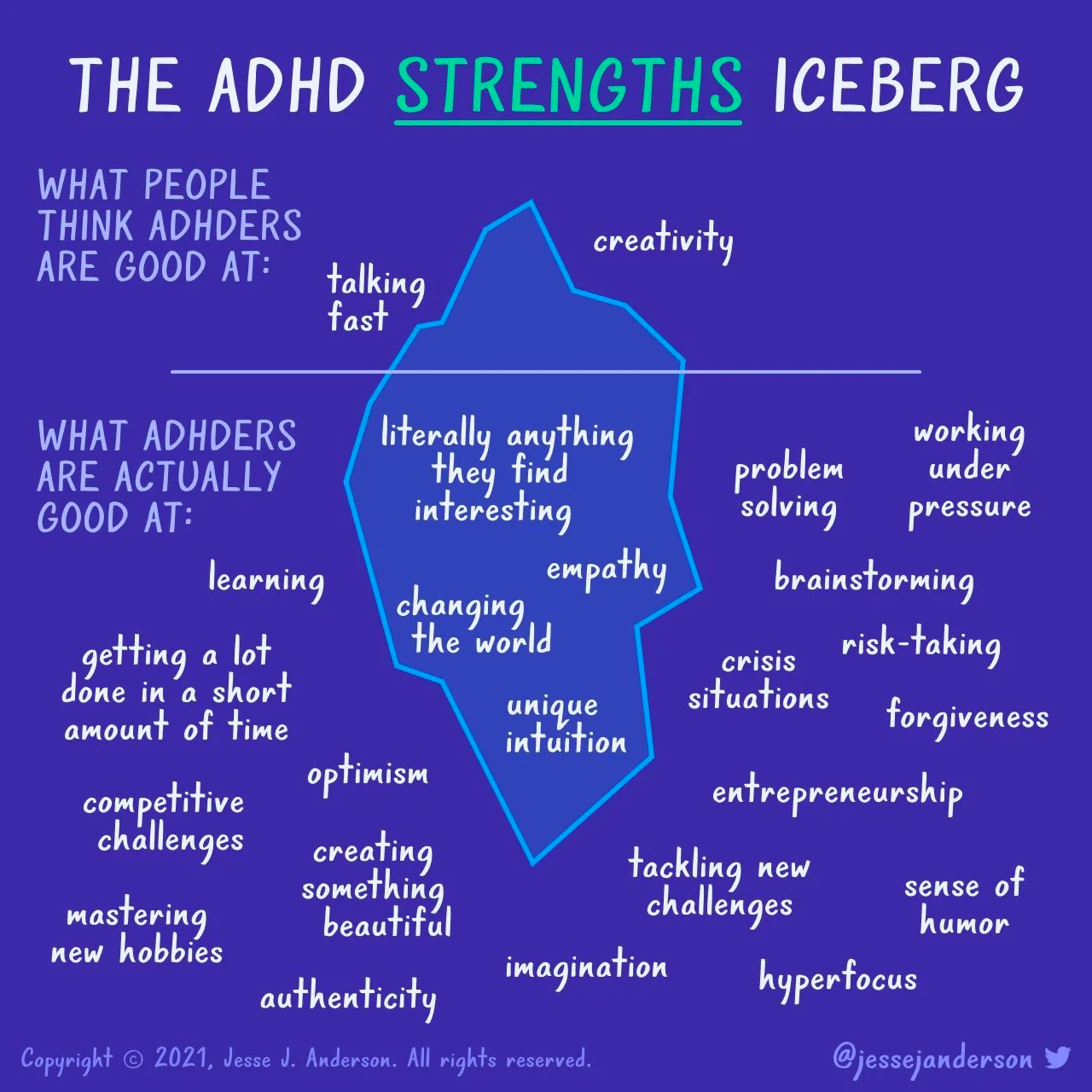
Check out what the Product ADHD community had to share about the upsides of ADHD
Asli Ozger — Head of Product at ParaPlus:
As a PM you need the capability to both diverge wide and focus, be analytical as well as a dreamer.
A Principal Product Manager who wished to remain anonymous:
I am constantly looking to work on new and exciting problems to solve. When I have a new project/subject to learn I tend to dive in and hit a flow state of hyper focus. Organization and keeping track of what I’m learning can be a challenge so I actively organize my ideas and keep structured notes and lists of “to dos.” Having adhd forces me to stay on top of my organization.
Jake Creps — Product Manager at Flashpoint:
I’m not on the HD side but definitely on the AD side. I found being a PM that switching focus across the barrage of daily issues/tasks actually played into my AD and has helped me juggle.
Geoffery Anderson — Product Portfolio Manager at Cisco:
Honestly, I thought ADHD was pretty much a requirement for the job
JH Scherek —Product Founder at Growth Plays:
Starting a company taught me how to focus, and ignore distractions (and actively push back or eliminate them) real fast… Haven’t taken adderall in over 10 years, would never take again. Takes away creativity and critical thinking for me.
Tim Donets — Freelance Product Consultant:
The way I see how to overcome ADHD while PMing is to narrow down what you do as a PM. We are very good at exploring, therefore make sure you are doing many discovery projects. We suck at planning and keeping up with structures — move away from delivery
Tips for coping with ADHD as a Product Manager
So how does one manage ADHD while still leading a productive and flourishing professional career? One of the most fundamental components of coping with ADHD is to learn to consciously pre-plan your time.
Block out calendar time to focus
This is a very popular recommendation that people coping with ADHD suggest, such as Ian Harvey, who works in product in London.
This involves things like blocking out calendar time for focus work, which can be enhanced by using the settings in your calendar/Slack/mobile device for busy/do not disturb.

Joseph Terranella adds that it’s important to set clear goals for meeting-free time.
Figuring out what schedule works best for you and taking advantage of your organization’s flex time if it’s possible is another schedule-based optimization. If, for instance you work better in the mornings, then start your day earlier and end earlier, or vice versa.
Integrate your Slack and calendar together to automatically update your status
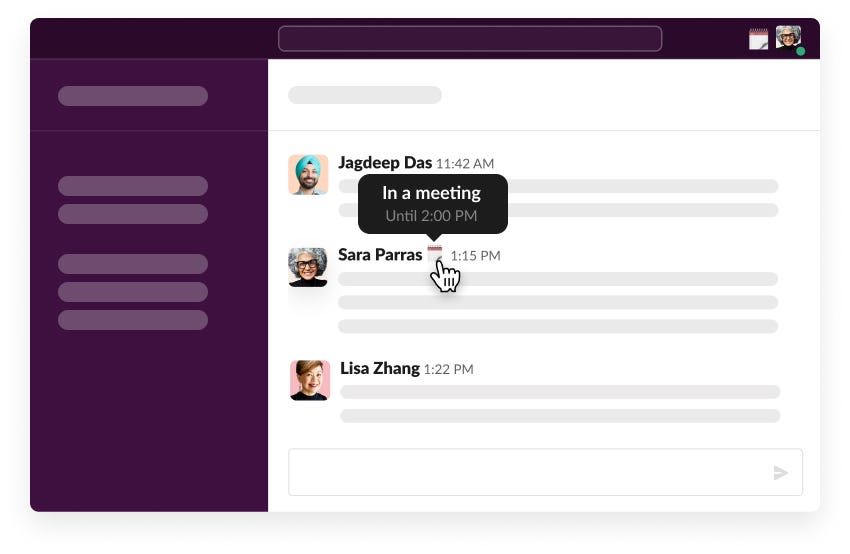
This is a great way to pre-plan scheduling so that you’re not distracted by notifications during a meeting. Schedule a calendar block with an agenda to turn your hyper-focus on tasks like:
- Spotting connections between systems that, if linked, could create a better user experience
- Writing out a list of blockers that key blockers that need to be addressed, but others may have missed
- Creating a high-level overview for technical teams for how a proposed product/feature works from A-Z, as Betty calls out below:

Schedule meetings with others to get work done
Proactively set up meetings with colleagues in order to workshop, address a list of questions, or better understand a particular process or blockers. Schedule a meeting or communicating a deadline to others to review work can also act as a pre-planned structure for accountability that can increase your motivation to get things done, given that there is a deadline that the preparation and work must be done by.
Pre-planning time can also tie-in with one of the ADHD superpowers (being able to connect the dots), by making time to think strategically and consider the implications and applications of what you know about a product roadmap, the resources involved, and the business vision.
Try out different motivation tools
If you can’t shake the challenge of getting motivated when blocking time to go deep and focus, try using Flow Club! Flow Club is a platform where people join virtual working sessions, starting with an outline of the tasks they will be working on and ending with a recap of how the work went. Irene is actually a Flow Club host who just celebrated her 1,000th session hosted!
A couple tools suggested by Ian Harvey include a Mac app called Filter that blocks out notifications from websites/desktop apps, and a gamified focus mobile app called Forest, which rewards you for focusing by planting trees in a forest, both in-game and in real life!
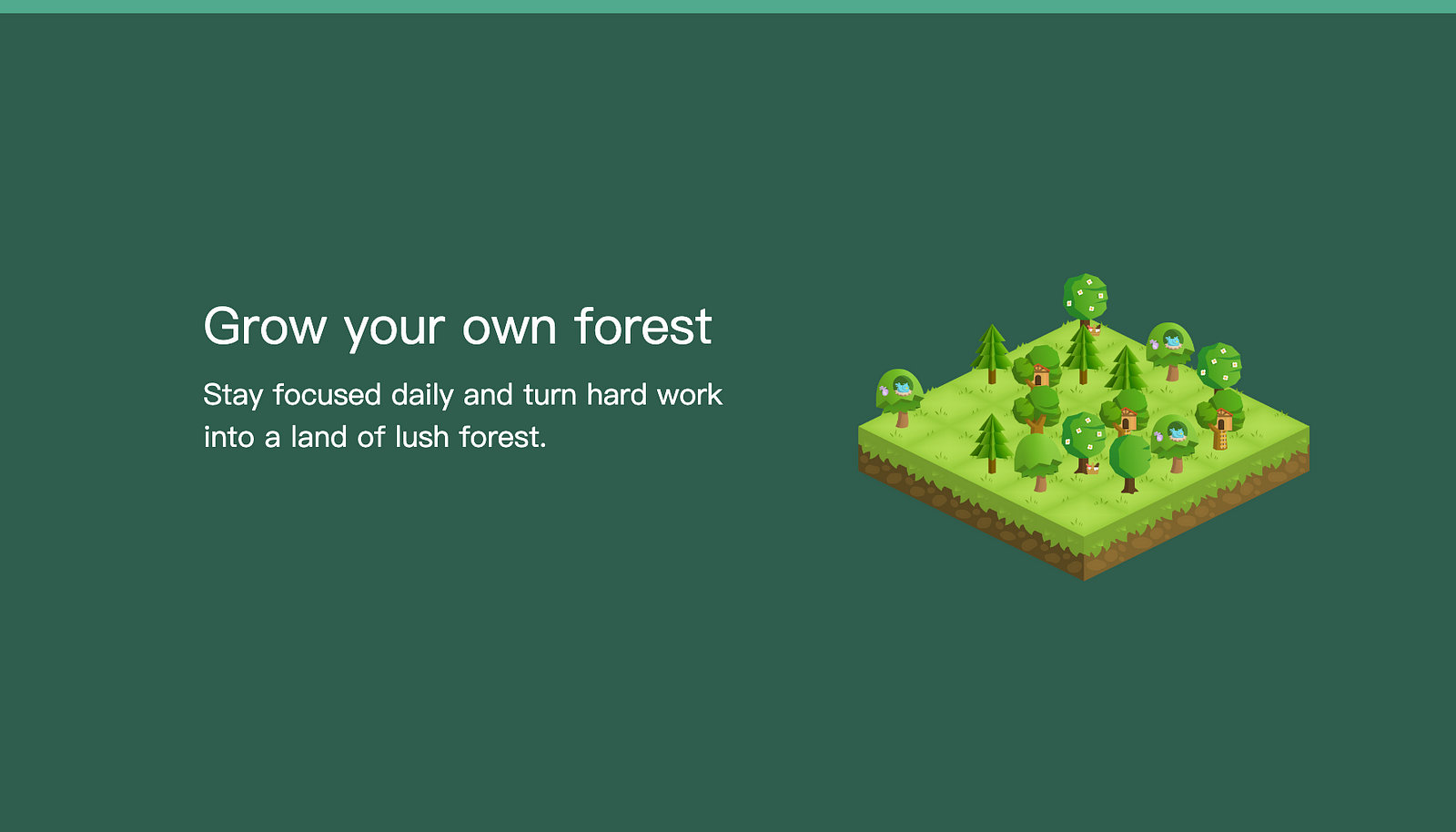
Try out different productivity tools
Explore visualization tools like Miro to diagram product flows, track project timelines, or mind map ideas. These tools not only make tracking and optimizing abstract workflows easier, but they’re also much prettier and more fun to use, which can be an added motivation boost for someone with ADHD.

However, be aware that visualization tools may also activate an unintended consequence of hyper-focus while leaving other, less-motivating tasks undone, so also consider how to mitigate over-focus on visualization, such as pre-planning a specific time block of time for this work and setting an alarm to bring you back from the visualization zone when it’s time to move on.
Customize tools you already use
Here are a few pro customization tips:
- Use the flag function on your email to mark items for review later, without worrying that you’ve accidentally read and forgot to mark them unread
- Create email automations to mark emails as unread that you want visibility on, but do not need to consciously read
- Spend one day a month unsubscribing from email notifications you don’t need
- Instead of leaving Slack messages unread, use the remind me later function to allow you to read and action certain messages for the end of the day or start of the next day, so that the unread notifications don’t creep back in to steal your attention after being addressed
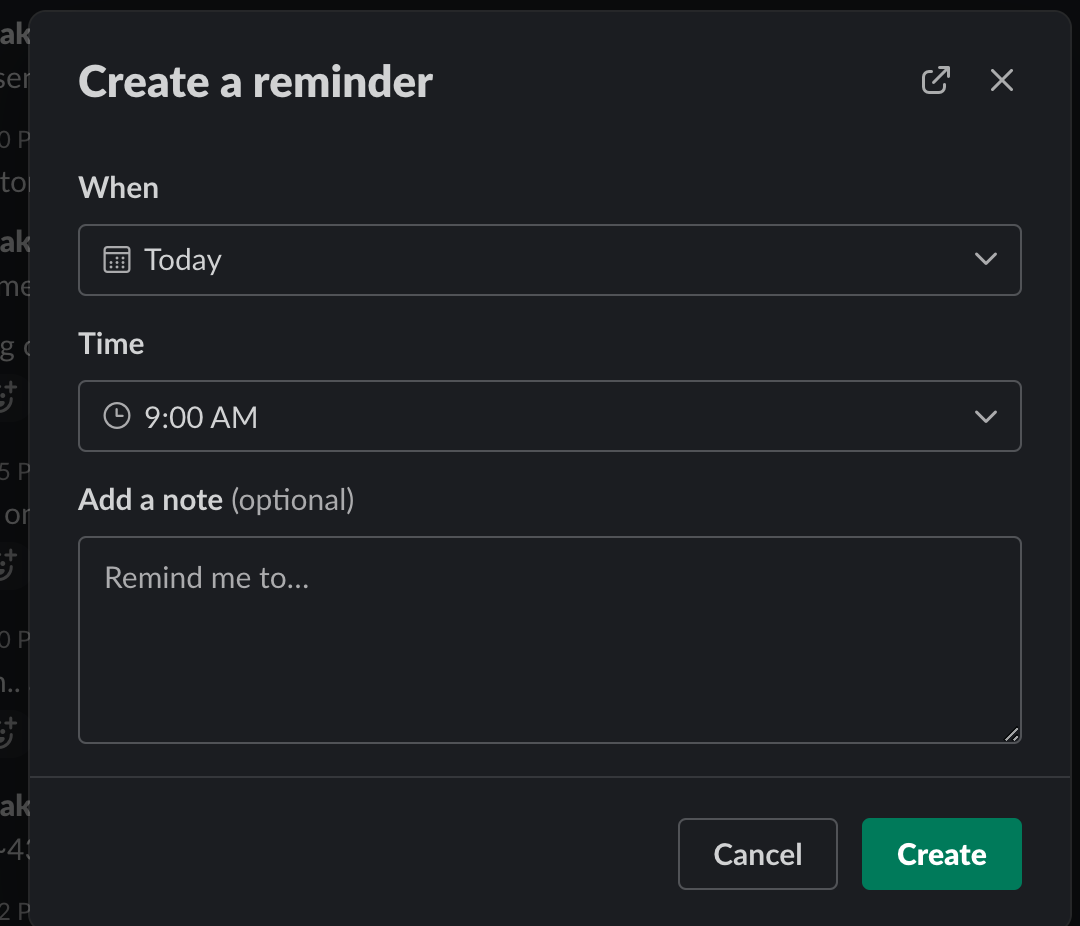
- Integrate your project management tool (e.g. JIRA) into Slack, so that you can easily copy-paste comments in Slack and on the spot when action items are raised and not have to worry about combing through for tasks later on
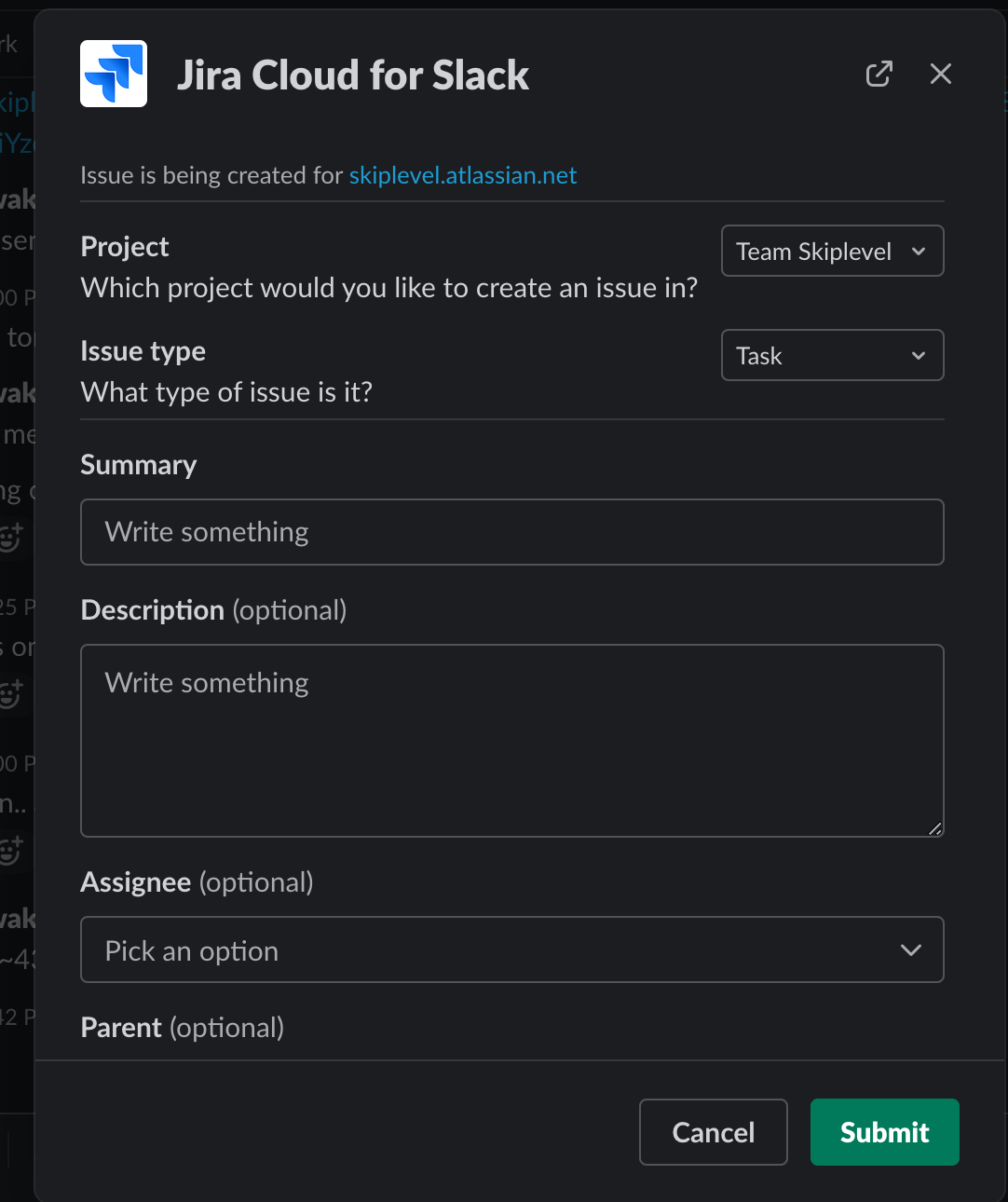
Physically write things down
For many people who live with ADHD, there is a stark difference between typing or tapping notes into a screen, vs physically writing them down on paper.
Writing down your thoughts as they occur is a popular suggestion from those in the ADHD community. Both Joseph Terranella, Sr. PM at Wolters Kluwer, and fellow PM, Betty suggests journalling at least once per week on not only what needs to get done, but on thoughts related to yourself and your decision making.
Alison Renfro recommends keeping a notepad always close-at-hand, as well as using sticky notes. You can also try using a personal whiteboard to visually nudge yourself to keep in mind priorities and other things that are important to remember throughout the day. Remember to update your priorities/reminders at the start or end of each day, and re-assess them at the start or end of each week.
Writing notes down, however, can also double the work of sharing those with colleagues, so to speed up the process of translating your handwritten notes into digital form, try a handwriting (OCR) recognition software like Evernote, Microsoft OneNote or Adobe Scan, or try writing/drawing notes using the pen on a tablet to eliminate the digitization step.
Sometimes though, you just can’t beat good old pen and paper, and that’s okay, too! Figure out what works for you and continue to experiment from-to-time to to see what other tools might work for you.
Adjust how you participate in or run meetings
Another idea for coping with ADHD as a PM is to adjust how meetings and communication in your team work, such as:
- Record meetings to store for later and use a transcription software like Otter to automatically capture the full meeting notes in case you missed something
- Include agendas and use timers to time box discussions according to the agenda items to prevent focus from drifting
- Limit the time that meetings last to 30 minutes, and follow-up digitally if needed to protect your time
- Be willing to decline meetings that you don’t need to attend, but take up valuable time that could be used for focusing
- Establish a habit of blocking 5–15 minutes after a meeting to digest the notes and immediately send meeting follow-up action items and owners. Also, be sure to translate action items into project management cards, to ensure nothing slips
- Proactively open up a dialogue with your stakeholders to learn how to evolve your team’s meetings or communication to be more conducive for your style and needs
Optimize your career and role
One product marketer I spoke with cited that it was easier to maintain her motivation earlier in her career and more difficult later on, because the learning curve flattened out later on, leaving her with more administrative/operational tasks that had longer time frames for feedback, vs the more exciting, fast-feedback spurts of learning she enjoyed in the first few years of her career. If learning is an important component of maintaining your motivation, look to take ownership of products or user experience flows that expose you to new technologies and keep your learning curve. Take new trainings like Skiplevel (technical literacy for Product Managers) to reinvigorate your curiosity and learning spirit, and enable you to add more value to your role and team.
Have discussions with your manager or leader about what aspects of your job you find rewarding and motivating and which you don’t, and work with them to shape your career in a way that keeps you engaged.
If remaining engaged on long-term projects is a challenge, then figure out how you can delegate delivery work or hand off the project sooner.
Get a professional development coach
Finally, try working with a coach or mentor, either at work or outside of work, in order to learn how to cope with ADHD. Coaches like myself are trained to help people with just about any personal development goal, and developing a custom approach to coping with ADHD that works for your personal needs and context is one of them.
Resources to check out for Product Managers with ADHD
- One Knight in Product podcast episode #23 on “Avoiding the agency trap & ADHD in Product” with Janna Bastow
- The Product Dynamic’s YouTube discussion on “Neurodiversity and Work”
- Alison Renfro’s Medium post on Being a Product Manager with ADHD or her YouTube talk
- Irene’s Twitter thread and LinkedIn thread about overcoming ADHD as a PM
Sign up for the Skiplevel newsletter to get more content like this straight to your inbox.
Learn more about the Skiplevel program ⟶
Connect with Irene on LinkedIn and Twitter and follow Skiplevel on LinkedIn, Twitter, and Instagram.
Become more technical without learning to code with the Skiplevel program.
The Skiplevel program is specially designed for the non-engineering professional to give you the strong technical foundation you need to feel more confident in your technical abilities in your day-to-day role and during interviews.

